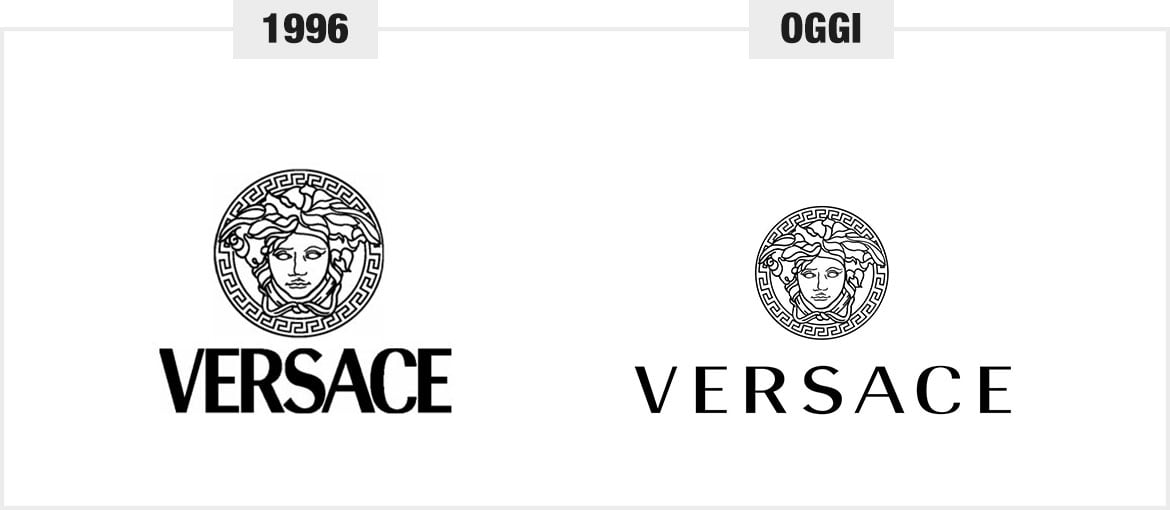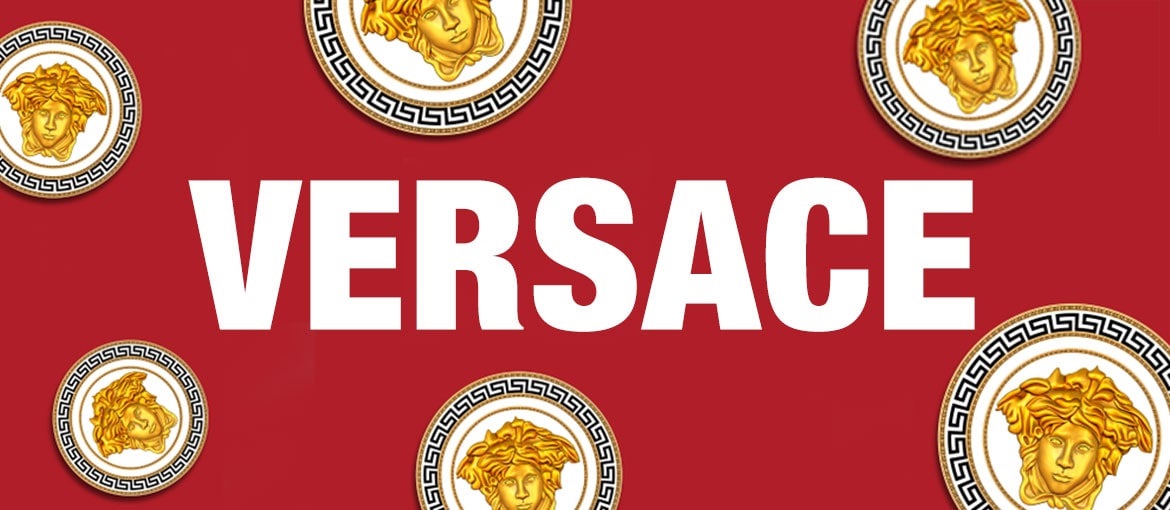He was opulent, unprincipled, with a boundless enthusiasm for lavish textiles. In 1995, Time magazine hailed him as the man of the hour.
His designs were donned by the most renowned supermodels: Naomi Campbell, Linda Evangelista, Claudia Schiffer, Carla Bruni, Cindy Crawford. Beyond the runway, celebrities like Elton John, Bon Jovi, Sylvester Stallone, Madonna, and Cher favored his attire. His brand was honored with an exhibition at the Metropolitan Museum of Art in New York in 1998 and at the Victoria and Albert Museum in London in 2002.
Here we delve into a brand emblematic of Italian haute couture: Versace. We’ll explore the evolution of its unique and distinctive logo.
The House of Versace
For those familiar with the company’s backstory, feel free to skip ahead to the next section, which delves directly into the logo. However, if you’re keen to learn about the origins and growth of this illustrious fashion house, let’s briefly retrace its history.
It was 1972 when the driven Gianni Versace departed Calabria for Milan to design a collection for Florentine Flowers. The collection met with resounding success, followed by significant collaborations with Callaghan, Complice, and Genny. During this time, Versace’s aspiration to establish his own brand, embodying his identity as a man, designer, and entrepreneur, solidified. Consequently, in 1978, the first collection under his name was launched. In 1988, his younger sister Donatella joined the company, taking the helm of Versus, Versace’s youthful line.
Much has been said and written about the “Versace tragedy.” Netflix even features a series, “The Assassination of Gianni Versace,” depicting the brutal murder that occurred on July 15, 1997. That day, Gianni Versace fell victim to serial killer Andrew Cunanan at his Miami Beach mansion. Cunanan took his own life eight days after his capture.
Following Versace’s death, the company experienced a severe crisis. The tragedy also scarred the brand’s identity: Gianni’s first name was dropped, leaving only the surname, Versace. Today, Donatella Versace continues to carry her brother’s legacy as the creative director of the fashion house.
The Evolution of the Versace Logo
In 1980, two years after its inception, Gianni Versace introduced the first logo for his fashion house, perhaps remembered by some.

The initial font was Avant Garde light, presenting compacted text with letters merging, akin to a chain’s links. Note how the “c” and “e” intertwine. The effect was certainly stylish. In 1990, this font was replaced with “Radiant medium,” starkly different from its predecessor: cleaner yet more striking and pronounced, aiming to assert a strong, well-established identity.

But what about the famous Medusa head? That appeared in the 1993 logo.

Since then, the Versace logo has seen only subtle alterations, like lightening the lettering’s thickness and widening the spacing. The Medusa head’s image, however, has remained largely unchanged, underscoring its classicism. Even when not accompanying the logo, the Medusa is omnipresent: a visit to Versace’s website reveals it everywhere.

The Significance of the Medusa
Why did Gianni Versace specifically select the image of Medusa? The choice is indeed unique.
Starting with an anecdote: Versace grew up in Rome, immersed in history and myth. As a child playing in an ancient Roman mansion, he first encountered Medusa’s depiction on the floor. That image captivated him even before he knew its story, leaving a lasting impression.
Now, to briefly revisit the myth: it narrates Medusa’s seduction of Poseidon in Athena’s temple, inciting Athena’s fury. In retaliation, Athena transforms Medusa into a monster with serpentine hair and fangs, her gaze turning onlookers to stone.
This myth speaks of two sins: lust and vanity, without which the fashion world wouldn’t exist. Whether Versace’s choice was an ironic nod or a product of nostalgic remembrance is unclear. However, the symbol carries an undeniable mythological significance:
- It pays tribute to the grandeur of Mediterranean civilizations, a theme echoed in Gianni Versace’s opulent clothing styles.
- The figure of Medusa, as enticing and captivating as fashion should be.
- It embodies lust and vanity, elements intrinsic to luxury.
Moreover, Medusa is also seen as a protective symbol, deriving from the Greek Μέδουσα, meaning guardian. Thus, the symbol was intended as a harbinger of the fashion house’s illustrious future. Possibly, there was a deeper intent in aligning the brand with this myth: to render its collections timeless, effectively “mythological.”
In an era of rapidly advancing technology continually reshaping our interactions and behaviors, it’s intriguing to ponder which other symbols, currently overlooked, might soon find new life and integrate into our daily existence.
Sources: Keith Houston. “Shady Characters: The Secret Life of Punctuation, Symbols, and Other Typographical Marks” (2013).

